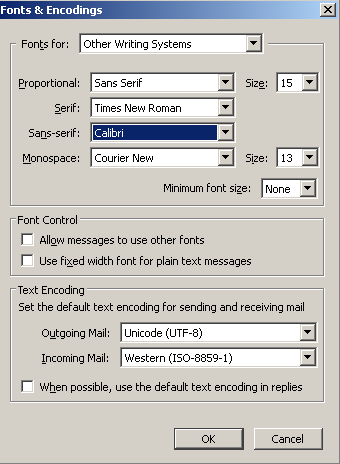

Note When you save a program file to a specified location, SAS Enterprise Guide automatically updates the reference to the program file in the project. This option is available for both programs saved locally and programs saved on a SAS server. A list of possible encoding options is displayed in the Select Encoding dialog box. If you want to specify the character encoding that is used when the program is saved, click Down arrow button on the Save button and select Program With Encoding. Note SAS Enterprise Guide automatically saves the program using its default character encoding when possible. You can set Mails default encoding to UTF-8. In the File name box, type the new name of the file, and click Save. To check whether your mail is being given a uniform encoding, do View > Message > Raw Source on the message in your Sent folder and check to see if all the 'charset' statements are the same (there should normally be 2 of these in a rich text message).' And the tip is: 'Fix B: Rich Text - Terminal. To change the folder in which the file is saved, select the correct folder from the Save in drop-down list.

You can save the file to your local computer or to a SAS server. Remember there are actually multiple ANSI code pages that a file could be encoded to. If you specify a Chinese ANSI code page encoding when you open the file, the file will be encoded as that ANSI code page. The Save As dialog box opens so that you can choose where to save the file. Remember that the default encoding for Streams in. To save a new program or to save an existing program and choose the name and location Below is the info from help menu.īy default, program files are saved as SAS Source Files (*.sas). I don't see there is an option to change that in EG.


 0 kommentar(er)
0 kommentar(er)
